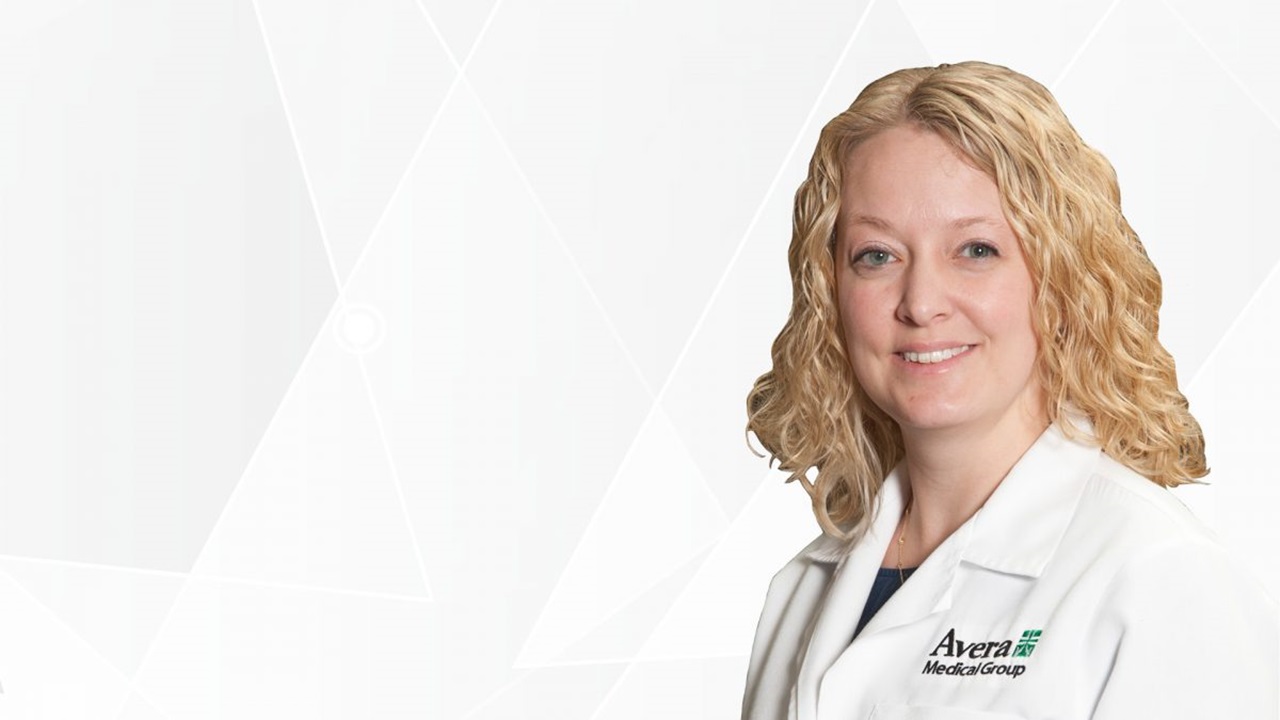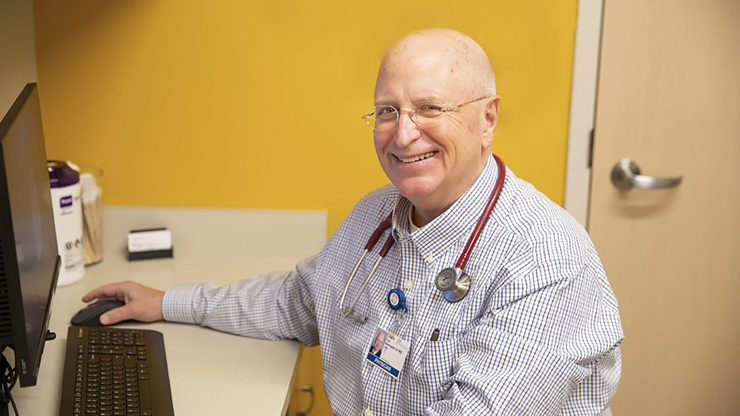USD Sanford School of Medicine Alumnae Confronted with Two Sides of Virus

This spring, Prestbo found herself with some mild symptoms that made her think she’d come down with a common cold: a minor headache, congestion and a cough. After those symptoms worsened and lasted for several days, Prestbo was swabbed and her test returned positive for the virus.
Prestbo estimates she developed symptoms about 13 days after her exposure. “I was exposed to the virus from a coworker who had no symptoms initially; when she did come down with some, she did all the right things and isolated herself,” she explained. “But in that period of time we worked together, I did get exposed. I was lucky in that I only had mild symptoms, but the big thing that I worried about, especially in a position like my own, is being sure that I didn’t expose anyone else.”
“We're trying very hard to do our best to keep everybody as safe as we can in the clinic. Being a health care professional, I still must go to work and interact with coworkers and patients. I encourage the general population to keep that social distance because obviously there are some of us who cannot."
The Center for Disease Control recommends that a person who is actively infected and having symptoms should be completely isolated in a single room. The concept is to keep any viruses that may be shedding into the environment contained to a smaller space to not put others at risk. Prestbo said she retreated to a bedroom in her home and didn’t leave for 10 days, getting food from her husband while both wore masks and gloves.
Most people are aware of the more common symptoms, but sometimes, less common symptoms present themselves, something that Prestbo says is indicative of the novel nature of COVID-19. “The signs people should look for are cough and fever, yes, but also alterations in taste and smell,” she explained. “Some people do get gastrointestinal issues, things like diarrhea or nausea and vomiting along with it. As far as we know of this virus--again, it's brand new-- so we don't know a whole lot about it yet. We do know that it can affect nearly any body system. It can be mild in some people, and it can be very severe in others.”
As a medical professional, Prestbo said that her practice has faced quite a lot of change in the face of the COVID-19 pandemic.
“We're trying very hard to do our best to keep everybody as safe as we can in the clinic,” she said. “Being a health care professional, I still must go to work and interact with coworkers and patients. I encourage the general population to keep that social distance because obviously there are some of us who cannot.”
“We are leveraging technology to see people virtually as often as we can. Overall volumes in the clinic have gone down because we're delaying things that don't absolutely have to be done right now.”
“We have to respect that the virus is motivated by its biology to spread itself as much as it can. We have to understand that we don't have control over everything that the virus is going to do. it's been very humbling in that way. You can be extremely careful, and it can still happen.”
Given her unique perspective of being both patient and doctor, Prestbo indicates that her experience had a profound influence. “There's a psychological impact of both having the virus and being a health care provider. I'm not normally the type of person to sit alone in a room all day. I know the potential risks that I, as an infected person, posed to those around me and my biggest fear was that someone I’d been around was going to become ill and that it would be severe. For someone who’s chosen a life in medicine, my motivation to keep everyone else safe was very strong,” she said.
“Having had the virus, I take it very seriously,” Prestbo continued. “We have to respect that the virus is motivated by its biology to spread itself as much as it can. We have to understand that we don't have control over everything that the virus is going to do. it's been very humbling in that way. You can be extremely careful, and it can still happen.”
While there is not a drug that can be administered to remedy the coronavirus, there are ways health care providers can help alleviate symptoms. In addition to staying home, well hydrated and well-rested, a medical professional can prescribe an inhaler, cough suppressant or advice on positioning, for example, if you're having difficulty breathing.
Prestbo recommends being active and maintaining a balanced diet and watching calories. “This pandemic is the most clear and present danger to our health right now and the healthier you are, the more likely you are to be able to fight off the virus if you do get it. And over time, making sure we stay fit and healthy and avoiding things like coronary artery disease by doing so--those risks don't go away.”
“It's important for us to appreciate everyone, all the frontline workers, whether they're in health care or other necessary sector jobs who are doing what they can to keep life moving forward during this time. I admire all those people, and I'm privileged to work with a lot of exceptional people.”
As is true for many clinics, Prestbo’s is readying for another possible wave of COVID-19. “We've been forward-thinking in getting things prepared for another surge. And if we are in that situation, we have a specific pathway for people who have been diagnosed with COVID-19-- a 24-hour-a-day hotline and access to video visits with providers at any hour of the day. We also developed a specific clinic for people with respiratory symptoms to keep those separate as much as possible from patients who come in for a more routine thing or a different issue.”
Although there are many unknowns surrounding the pandemic, some things are for certain, according to Prestbo.
“It's important for us to appreciate everyone, all the frontline workers, whether they're in health care or other necessary sector jobs who are doing what they can to keep life moving forward during this time,” she said. “I admire all those people, and I'm privileged to work with a lot of exceptional people.”



